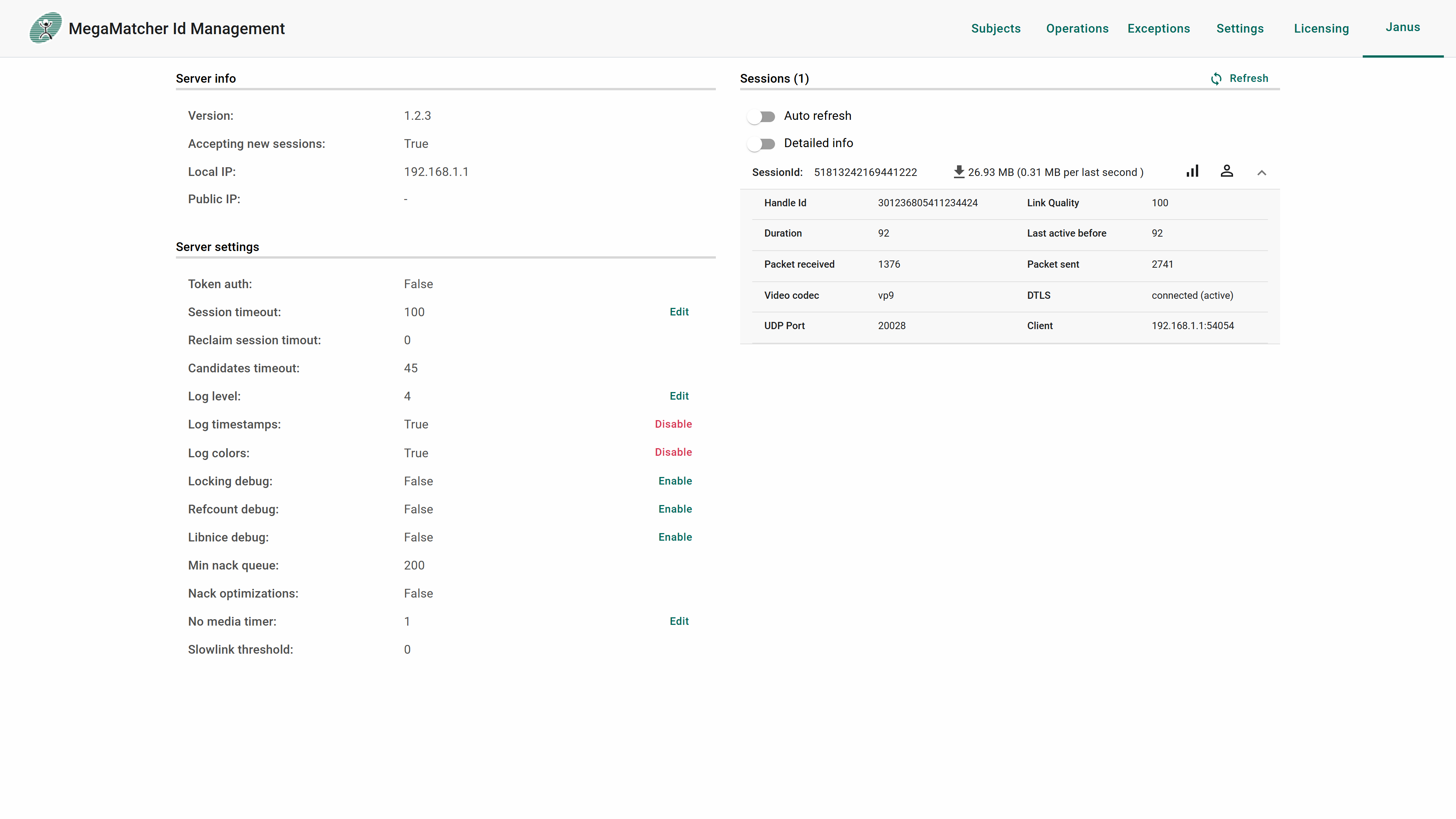Management Web
Management component is responsible for managing licensees, settings and the database.
The default Management web service address is http://<server_ip>:40004 although the port may change during server configuration therefore change the url accordingly.
Login
After navigating to Management web component url, you will see a login screen:
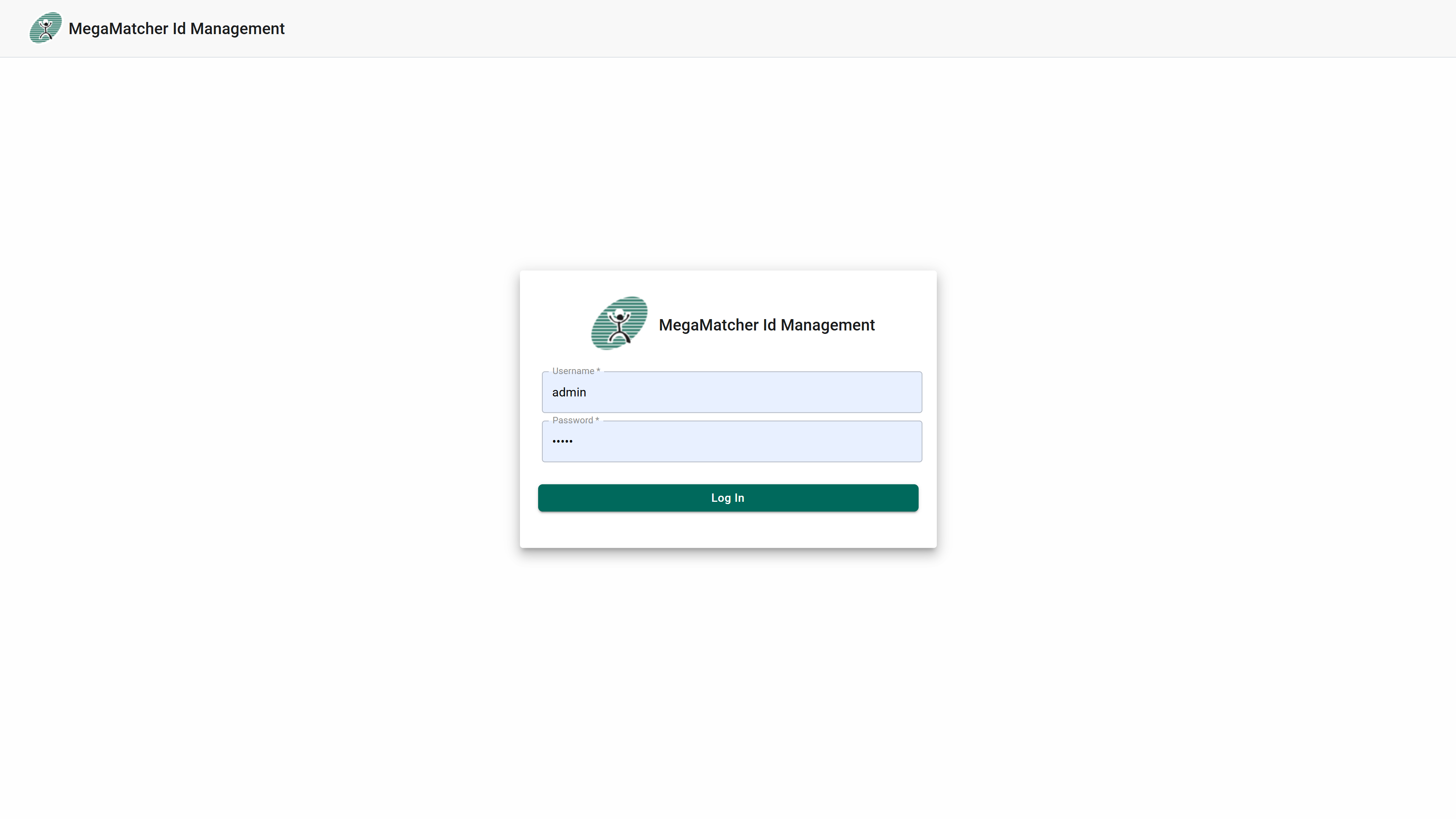
The default login credentials for Management web component are admin as username, and admin as password.
Subjects
Subjects is the first and default view after successfully logging in. Subject view can be used to see what is enrolled in the database, review enrolled subjects details.
The full Subjects view looks like this:

Subject filtering system allows to easily find subject by subjects ID if more filtering is needed, it can be found by clicking more filter:
More filters allows to filter subjects by:
- Enrollment date
- Liveness mode
- Status
- ICAO warnings
- Modality
- Quality
- Liveness quality
- Estimated age
- Yaw
- Roll
- Pitch

It is possible to view each subject individually by clicking on the row. Subject information windows will appear. Depending on the modality it will look slightly different.
Subjects individual view allows:
- Viewing subject information including extracted image quality, face rectangle and audio
- Downloading subject info including template, original image, token image, audio by pressing triangle down next to download
- Deleting subject record
Face modality:

Voice modality:

Finally, the Subjects view can be used for enrolling new subjects from different data formats:
- Image (This counts as a single PRT transaction)
- NTemplate (This counts as a single PRT transaction)
- MMIDTemplate (As template was extracted on MMID SDK or Server previously, it is not charged additionally)
And there are a few settings while creating the subject:
- Modality selection
- Detect liveness
- Check ICAO
After pressing Create subject button, subject creation view will appear:

If Image and a template is passed at the same time, only template will be used as face reference to the database. Image will only be used for preview, and later added to the database for display purposes.
Operations
This window shows all operations that were made on MegaMatcher ID server, including subject operations.

Similar to subjects you can easly filter by operation UUID, if more filtering is needed, it can be found by clicking more filter:
More filters allows to filter operations by:
- Operation date
- Operation type
- Liveness mode
- Status
- ICAO warnings
- Modality
- Quality
- Liveness quality
- Estimated age
- Yaw
- Roll
- Pitch

It is possible to view each operation individually by clicking on the row. Operation information windows will appear, depending on modality will look slightly different and differently then subject some information can be missing depending on the status of operation.
Operations individual view allows:
- Viewing subject information including extracted image quality, face rectangle and audio
- Downloading subject info including template, original image, token image, audio by pressing triangle down next to download
- Deleting subject record, note: if operation is linked with a subject, you cannot delete the operation, you need to delete the subject to which it is linked
- If operation has a subject linked to it, you can go to that subject by clicking on
Go to subject
Face modality:

Voice modality:
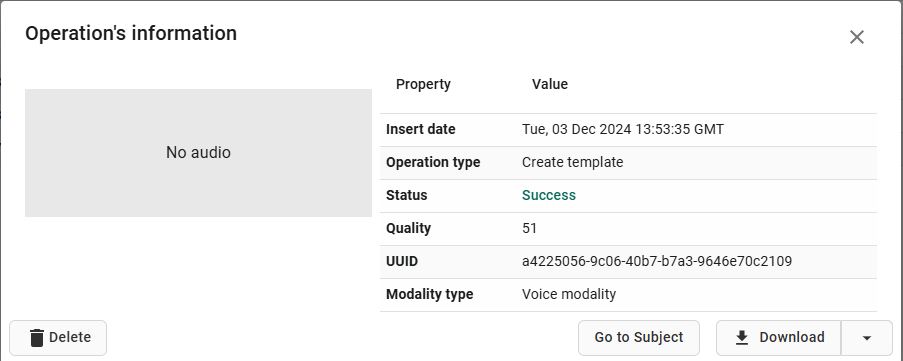
Exceptions
Exceptions are useful for debuging and finding problems with MegaMatcher ID server.
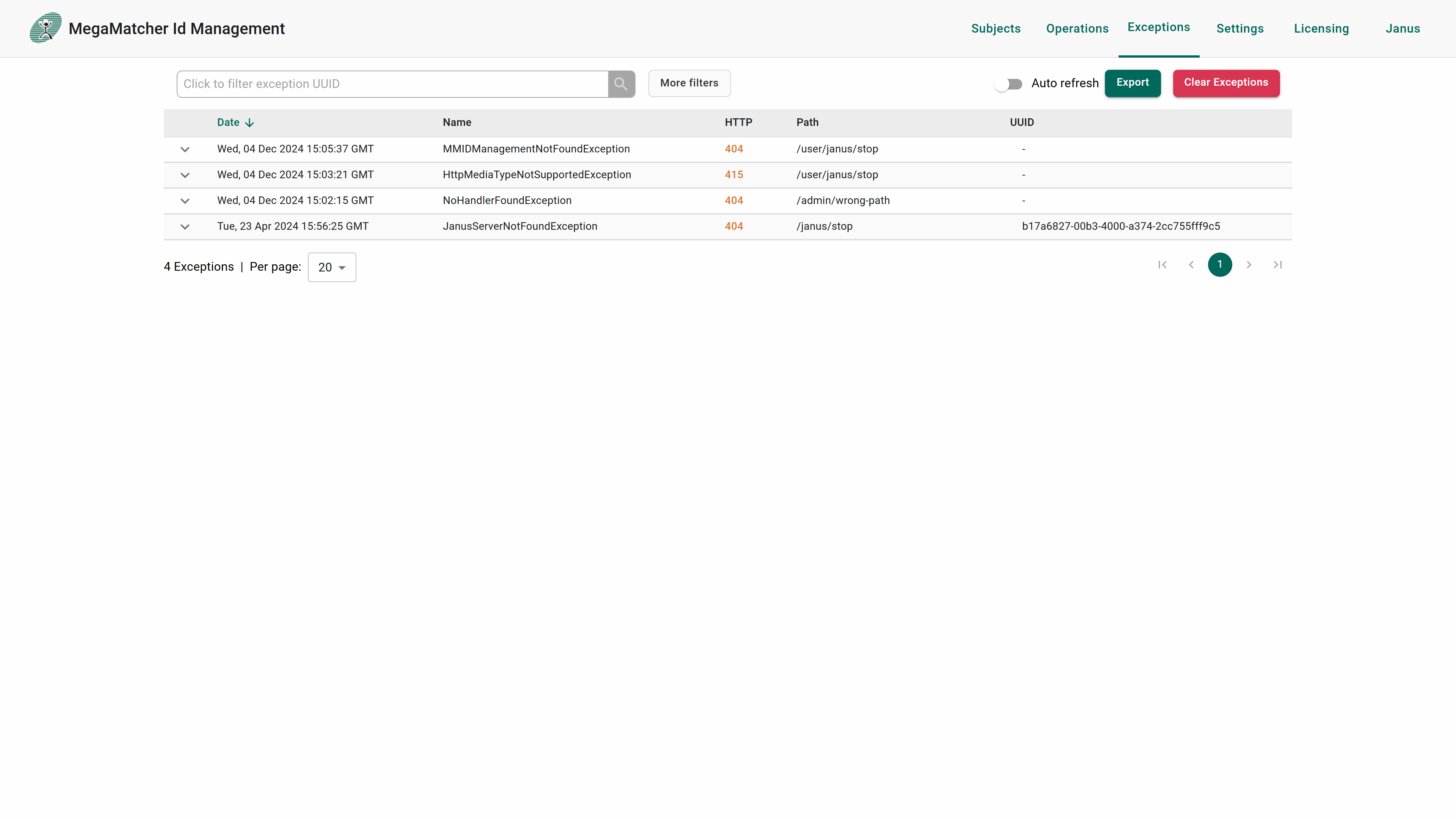
You can easly filter by operation UUID. If more filtering is needed, it can be found by clicking More filters:
Note that due to the nature of exceptions, not all exceptions can be tracked with UUID, but those that have UUID can be tracked to the operation that caused the exception.
More filters allows to filter exceptions by:
- Enrolliment date
- Exception name
- Exception message
- Http code
- Path

Additionally by pressing on the exception, the exception info will expand to show extra infomation and what could have caused it.

Moreover a few more functionalities:
- Auto refresh - monitor exceptions continuously as they happen without refreshing the page
- Export - generetes a json of all exceptions to be analyzed at a further date, or by the MMID support team
- Clear exceptions - clears all exceptions
Note: the default number of exceptions that are saved is 10000.
Settings
There are different types of settings on MegaMatcher ID server, which are divided to a few different tabs For more detailed explanation see here.
Capturing
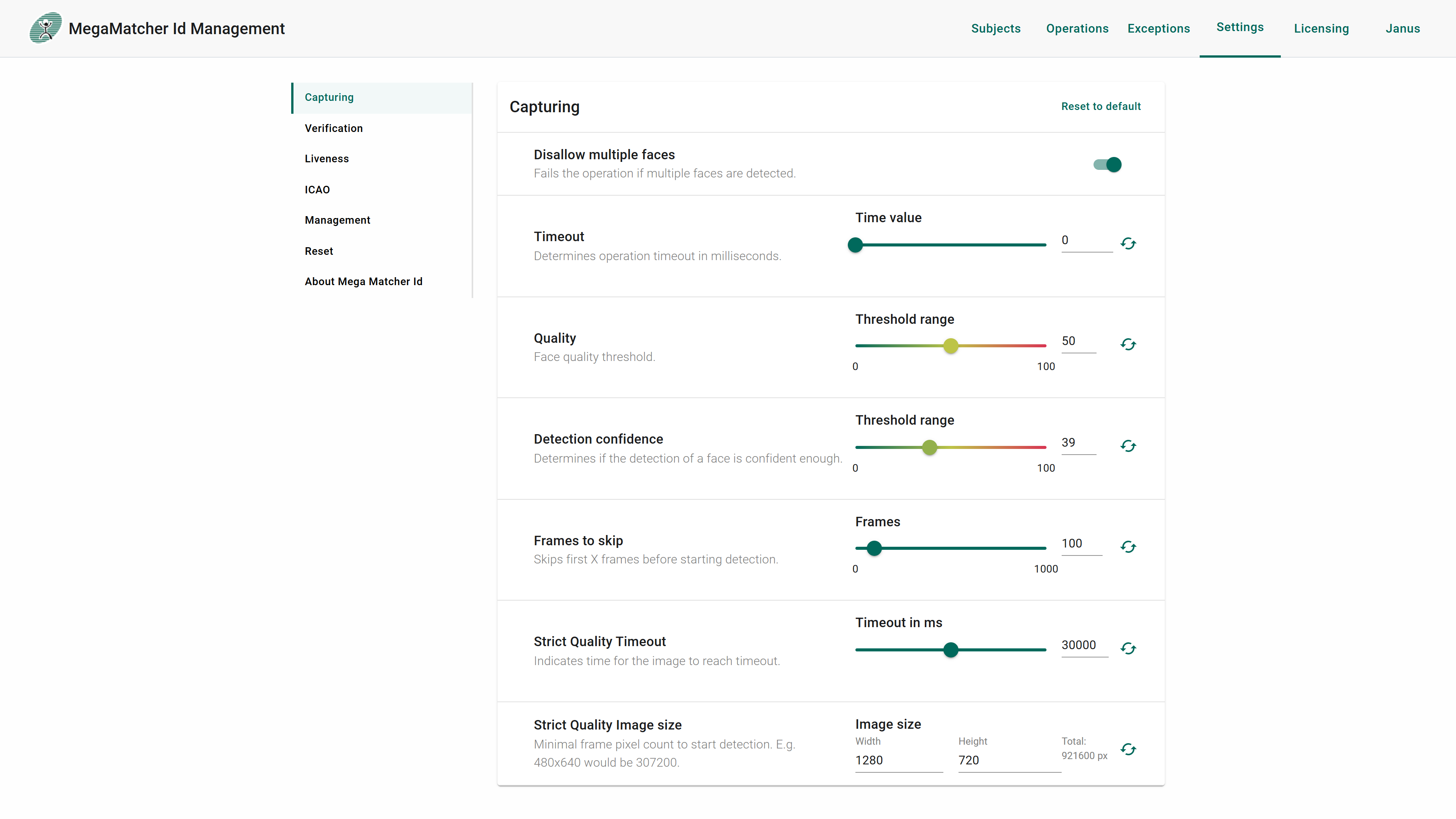
Verification
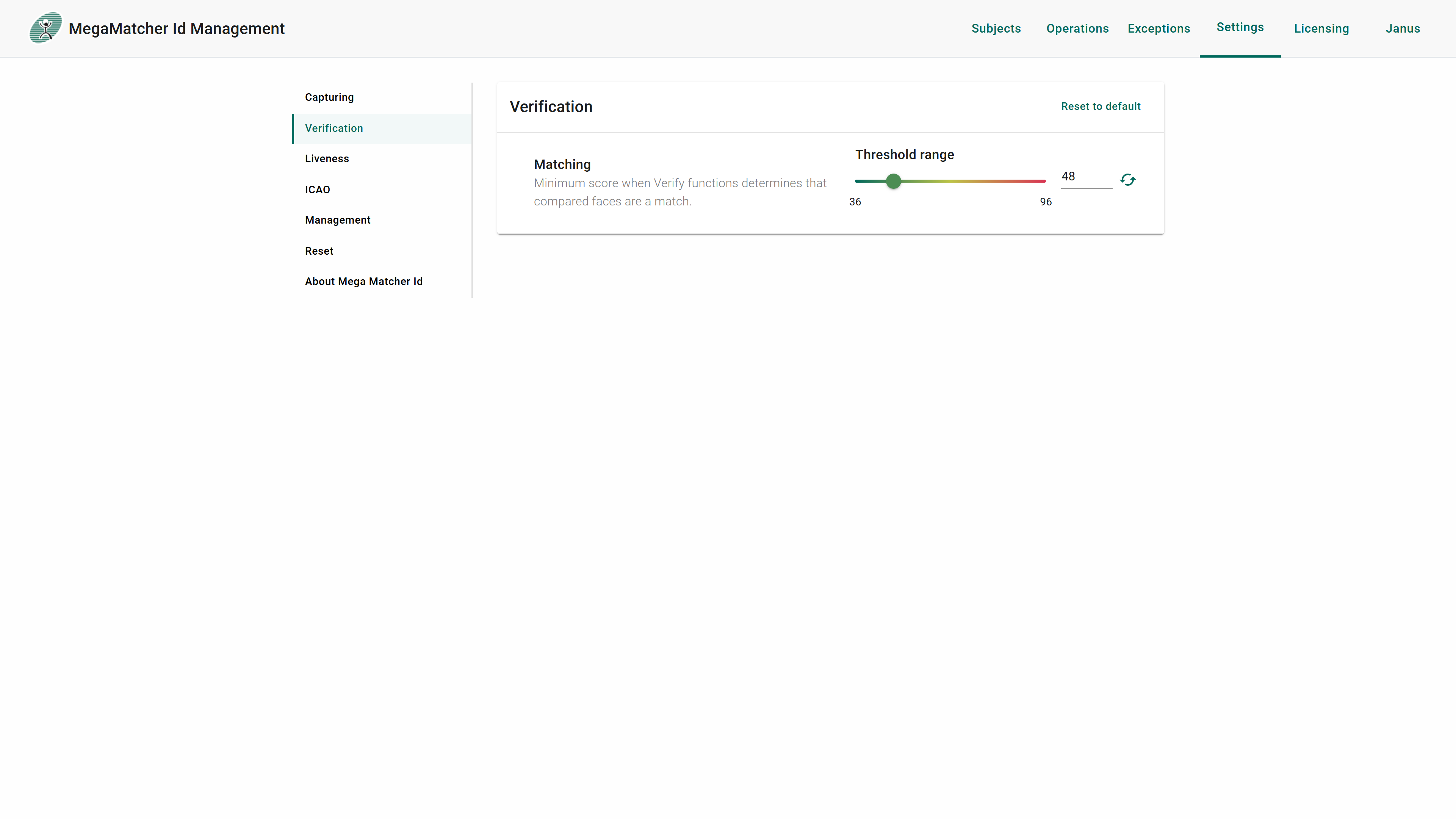
Liveness
To use Liveness you first need to enable it using the switch at the top right. Then Liveness settings will become active. Liveness custom action sequence is only used in the custom liveness mode and thus is only available when custom liveness mode is used. To enable ISO 30103-7 settings press Apply next to the parameters, you will then be prompted on what settings to use: PC or mobile. After you apply the settings, it will automatically change the appropriate parameters from the table.
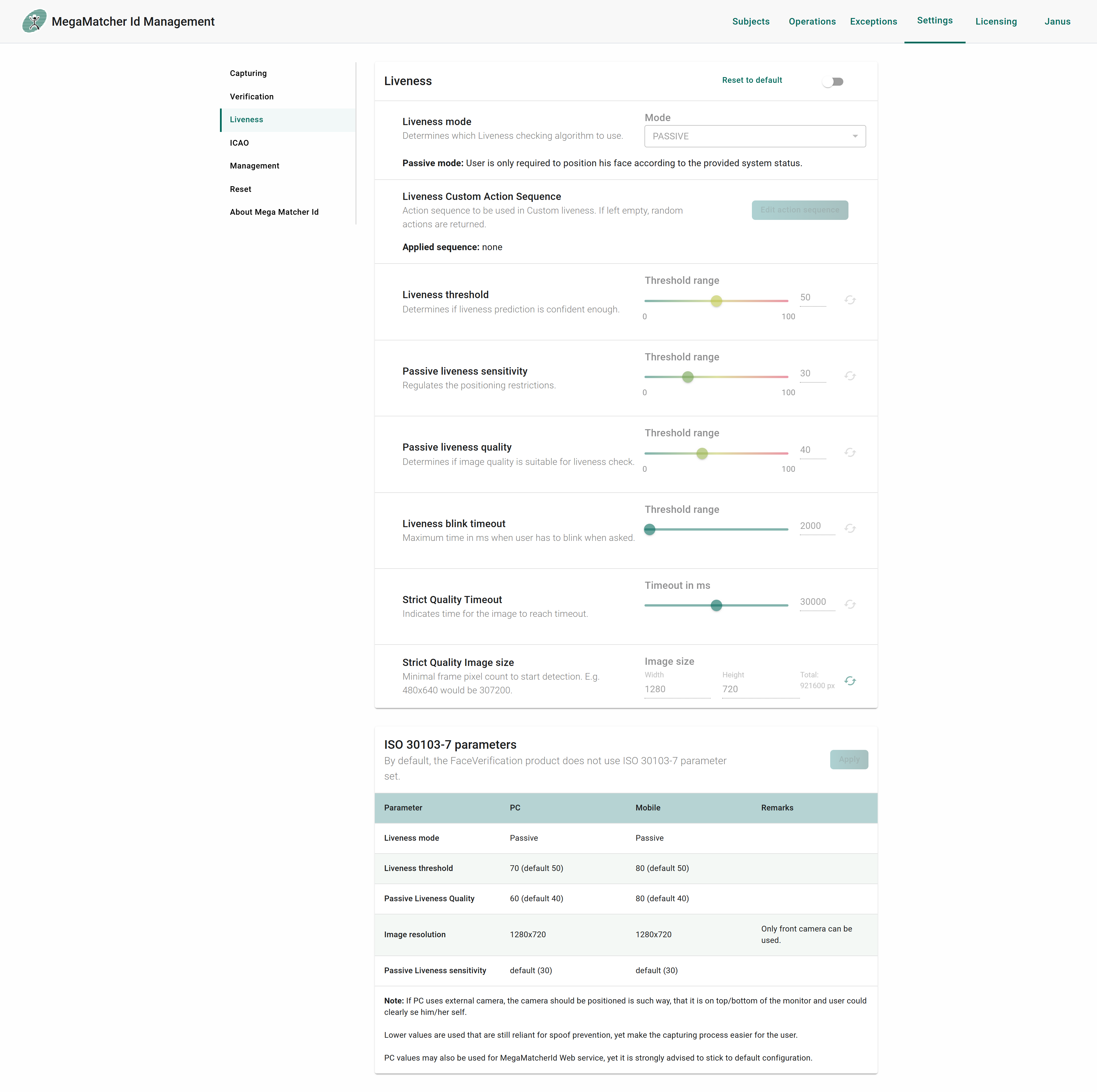
ICAO
To use ICAO you first need to enable it using the switch at the top right. Background color is only used when Remove background is enabled.
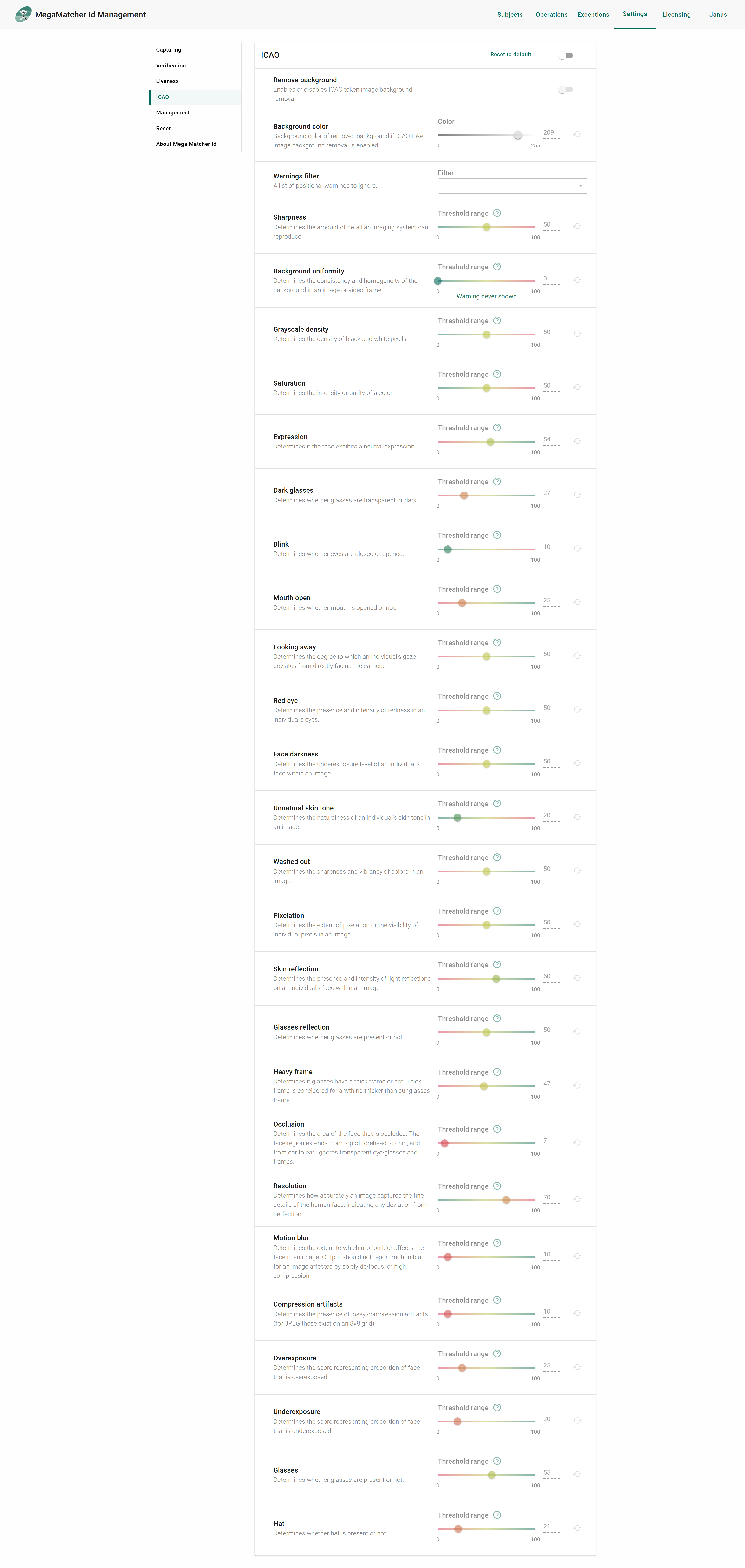
Accounts
To learn more about the different roles and their permissions, see here. Passwords are securely encoded in the backend. By default, two accounts are created: User and Admin. These are used for the demo web interface and the management web interface, respectively.

Management
To have the ability to clear database, it needs to be enable on the server settings see development properties. Exception filter settings are used to filter out non relevant exception to not be saved to the database.
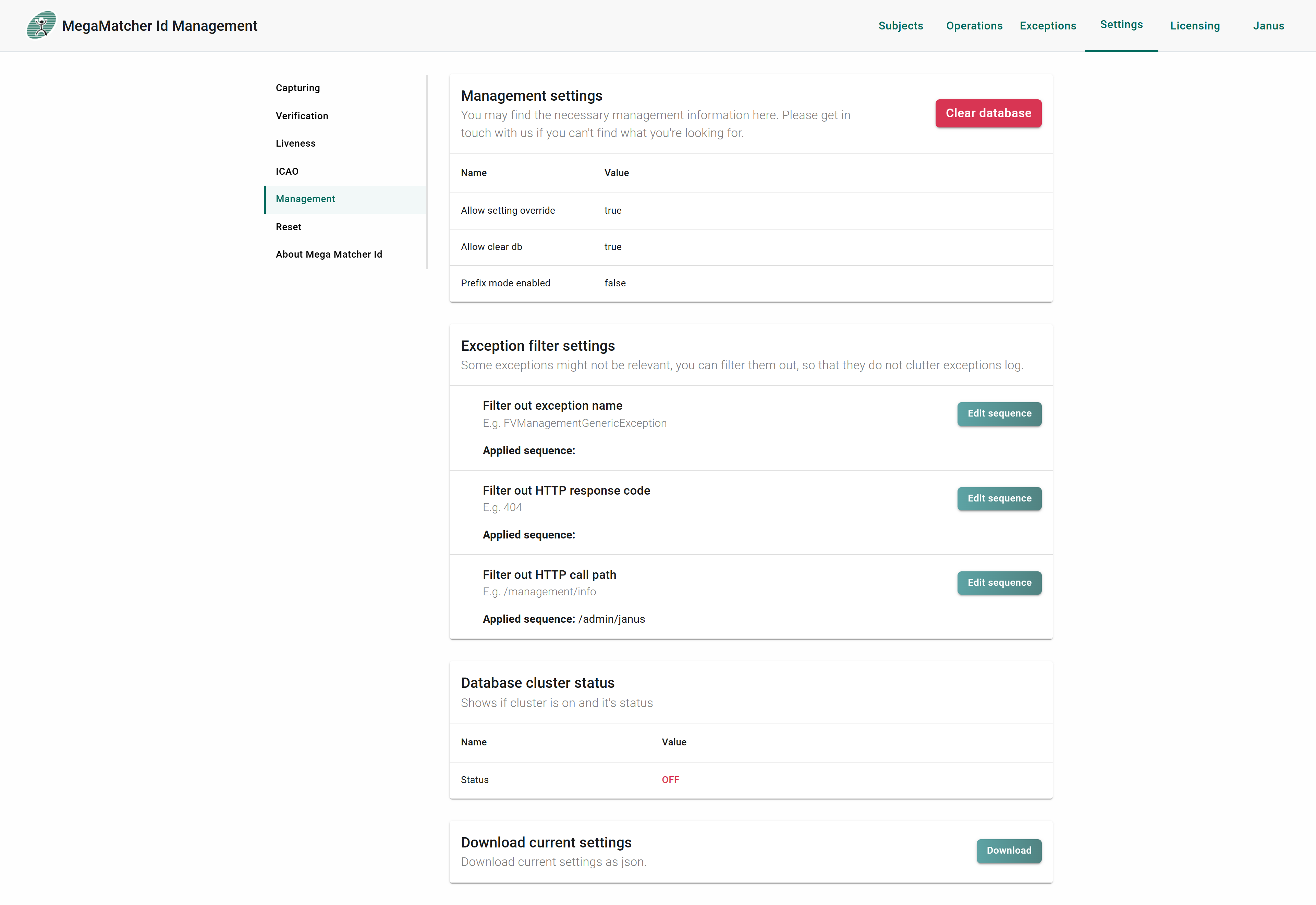
Reset
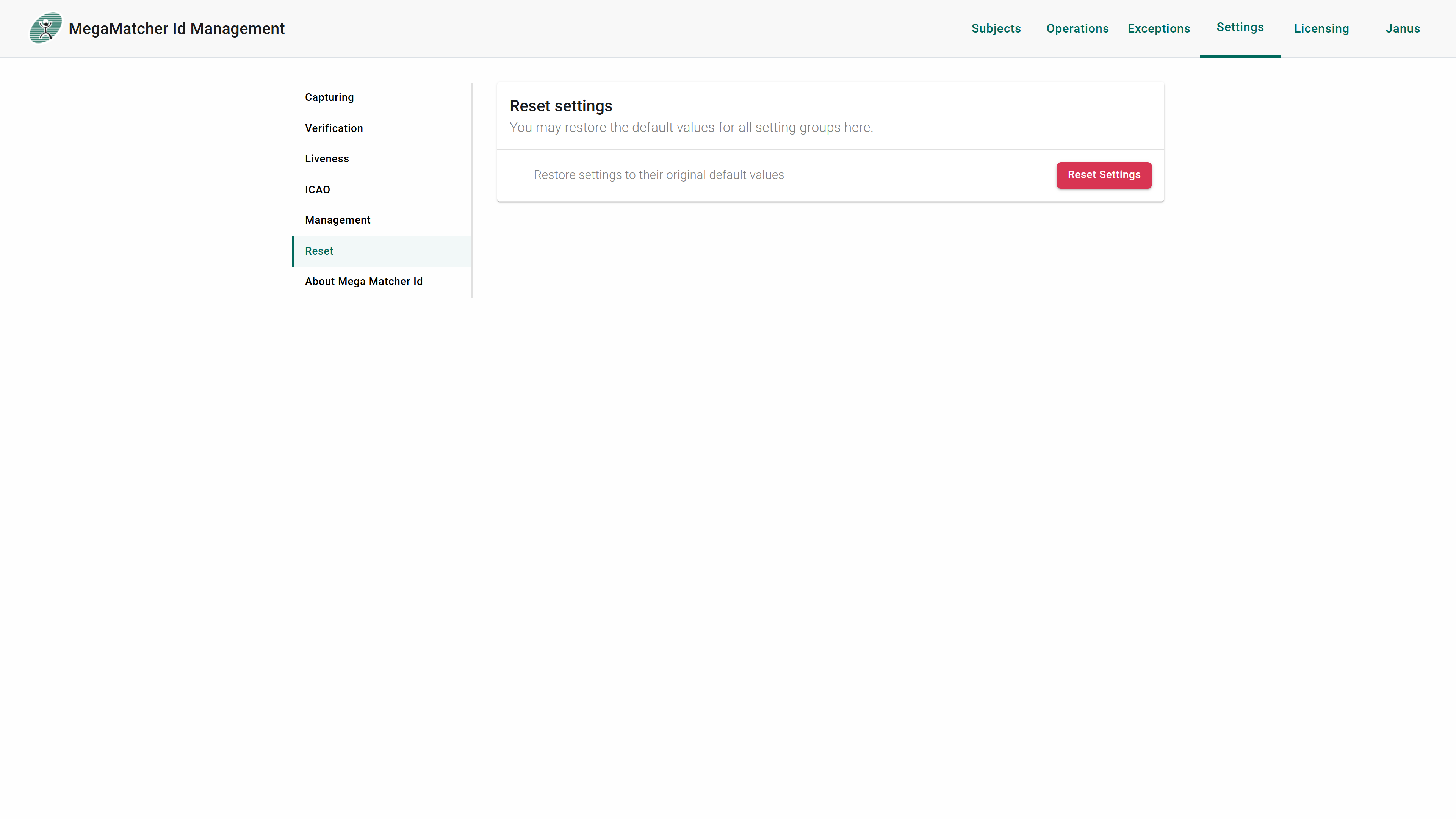
About

Licensing
Licensing view shows current status of licensing service that management is connected to. In this view user can observe licensing used and available operation counts. If non-trial installation was made, the view also shows connected dongles or internet license in use.
Usage shows what licenses are available and for each of them how many are remaining and used:
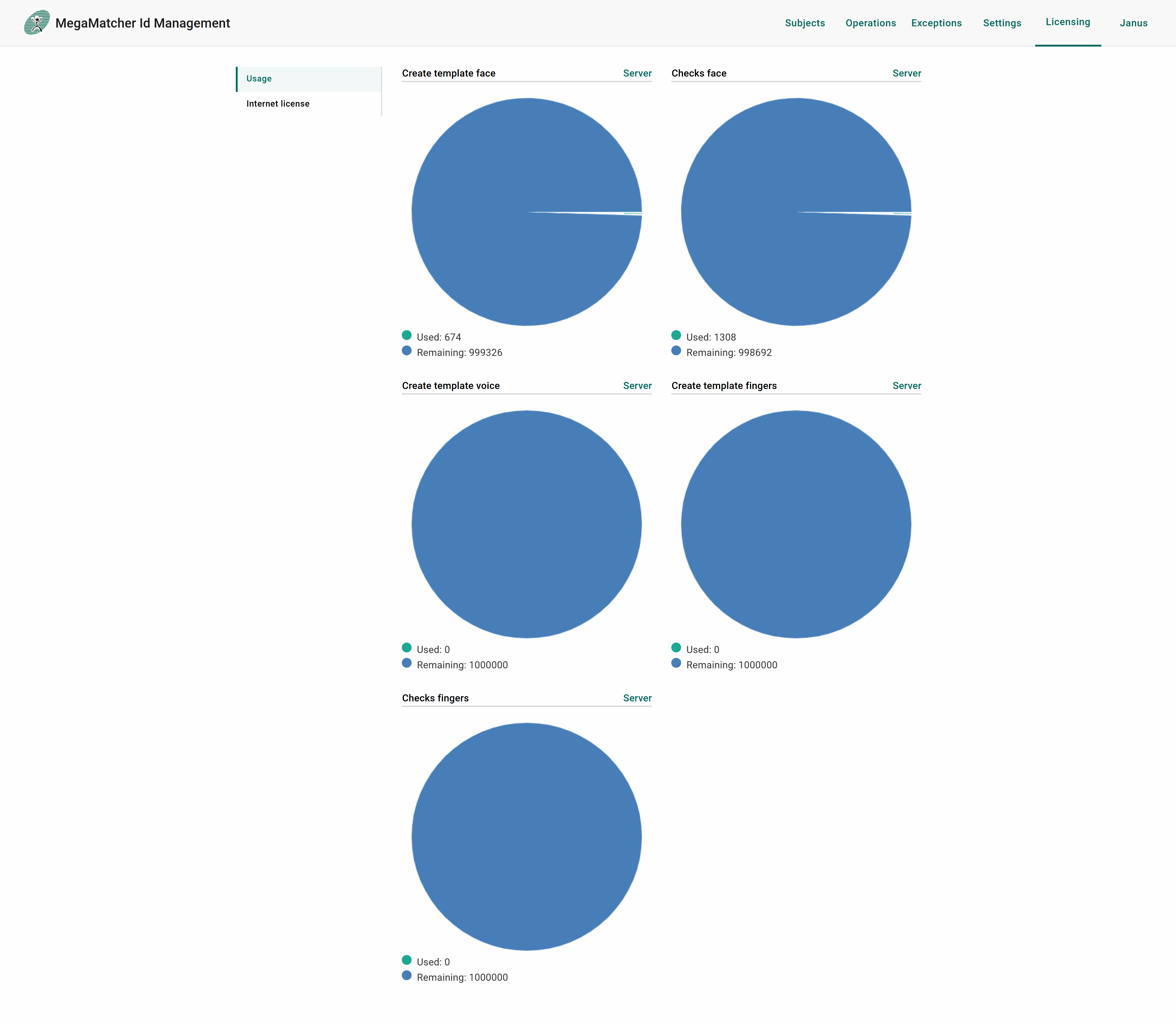
When trial/cloud is used:

When internet license used:
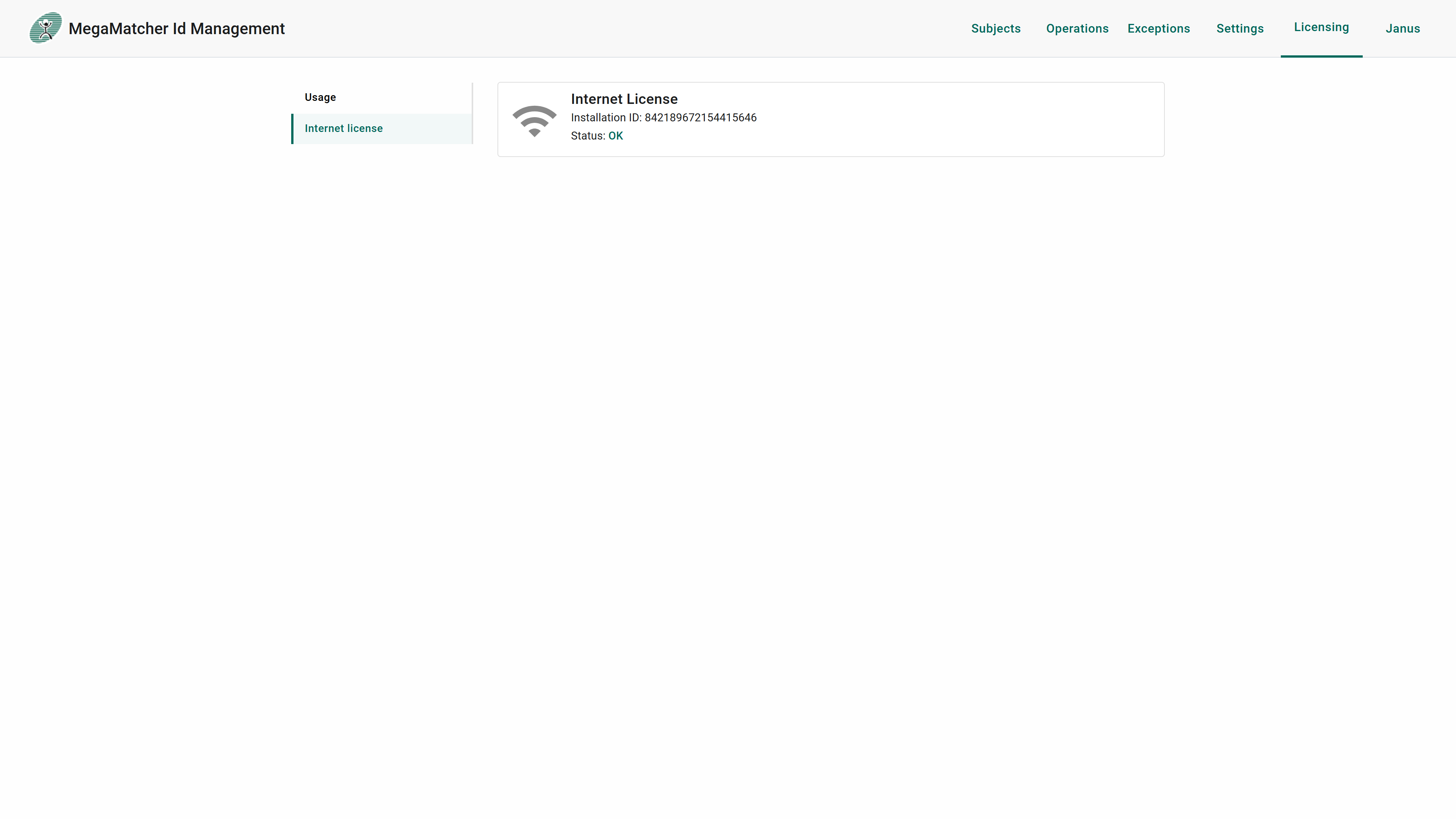
When dongles used. This is also where you can do dongle updates and generete dumps:

Janus
Janus view shows the status of janus, allowing to change some of the settings (see configuration script)
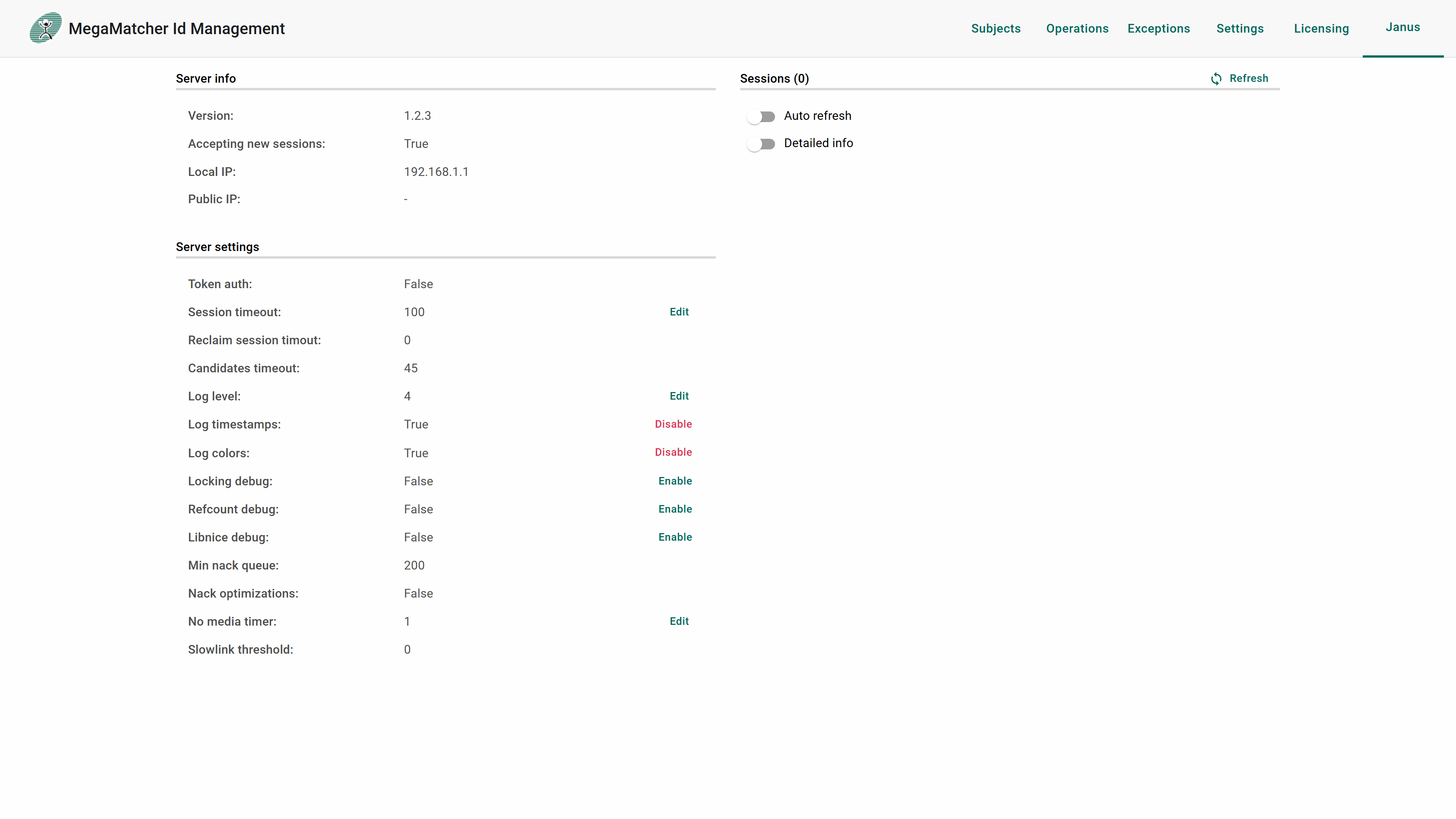
Also you see list a of active sessions:
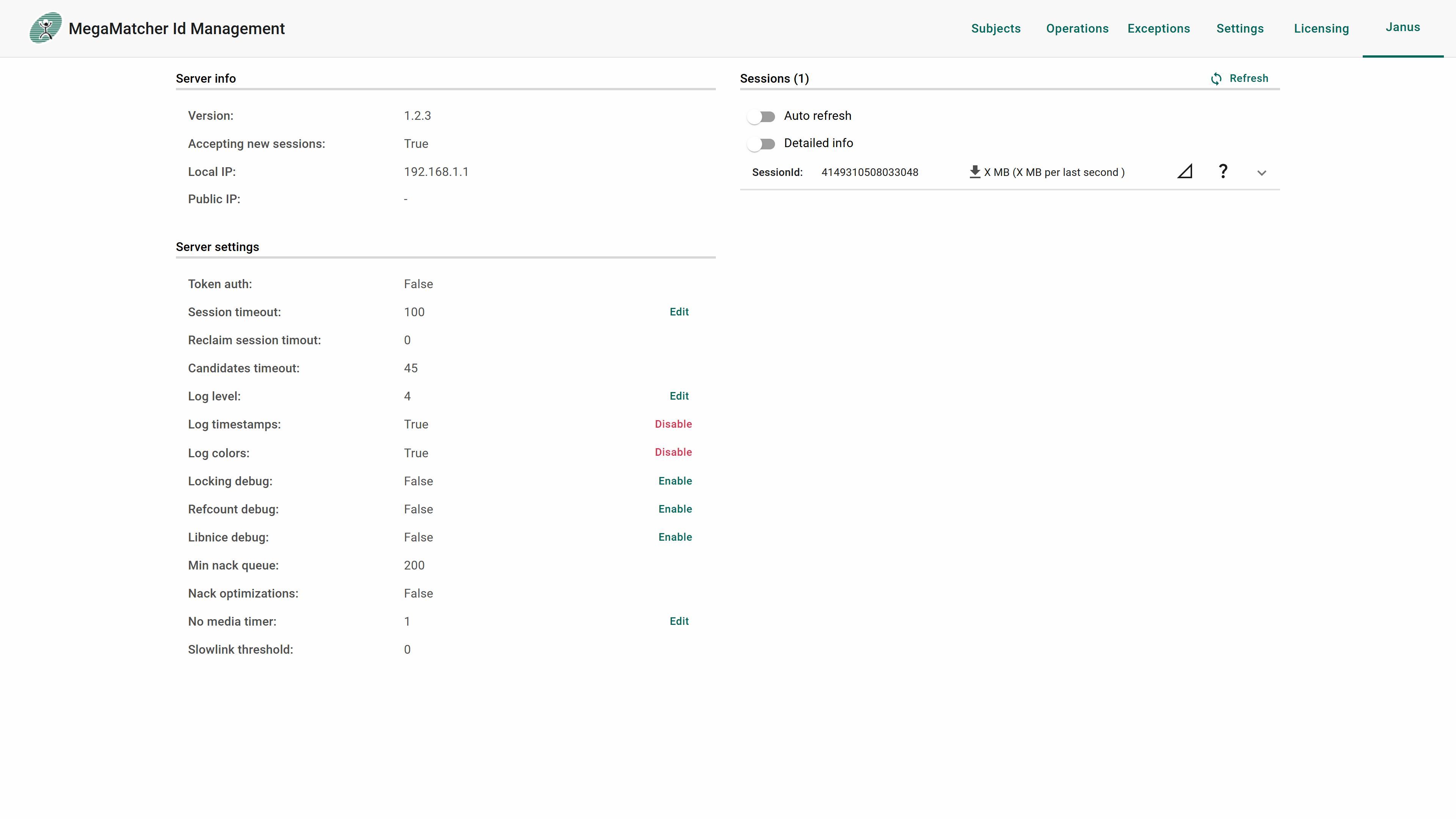
If clicked on an active session, detailed info is displayed:
